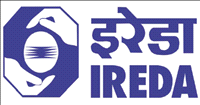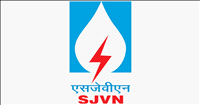Interim Union Budget 2024–25: Key highlights
01 Feb 2024
.jpg)
Embodying the principles of ‘Sabka saath, Sabka Vikas, and Sabka Vishwas,’ Union Minister for Finance and Corporate Affairs, Nirmala Sithraman, unveiled the Interim Budget 2024–25 in Parliament, aligning with the ‘Sabka Prayas’ approach. Following are the key highlights of the Interim Union Budget 2024–25 discussed in the session.
Social Justice
Under the umbrella of social justice, the Prime Minister’s focus resonated with the upliftment of four major segments: the ‘Garib’ (poor), ‘Mahilayen’ (women), ‘Yuva’ (youth), and ‘Annadata’ (farmers). Noteworthy initiatives included ‘Garib Kalyan, Desh ka Kalyan,’ where government assistance has successfully lifted 25 crore people out of multi-dimesional poverty in the past decade. The Direct Benefit Transfer (DBT) of Rs 34 lakh crore through PM-Jan Dhan accounts led to substantial savings of Rs 2.7 lakh crore for the government.
A significant stride was marked by PM-SVANidhi, providing credit assistance to 78 lakh street vendors, with 2.3 lakh benefiting for the third time. PM-JANMAN Yojana and PM-Vishwakarma Yojana were introduced to aid vulnerable tribal groups and support artisans and craftspeople in 18 trades, respectively.
Welfare of Farmers
Turning attention to ‘Annadata,’ initiatives such as PM-KISAN SAMMAN Yojana and PM Fasal Bima Yojana provided financial assistance and crop insurance to millions of farmers. The Electronic National Agriculture Market (e-NAM) integrated 1361 madis, servicing 1,8 crore farmers with a trading volume of Rs 3 lakh crore.
Momentum for Nari Shakti
The commitment to women’s empowerment was evident, with 30 crore Mudra Yojana loans disbursed to women entrepreneurs. Female enrollment in higher education witnessed a commendable 28% increase, and in STEM courses, girls and women constituted 43% of enrollment—a figure standing out on the global stage. PM Awas Yojana (Grameen) contributes significantly, with over 70% of houses allocated to women in rural areas.
PM Awas Yojana (Grameen)
Despite the challenges posed by the COVID-19 pandemic, the commitment to achieving the target of three crore houses under PM Awas Yojana (Grameen) remained steadfast. The vision extends to an additional two crore houses in the next five years.
Rooftop Solarization and Muft Bijli
An eco-friendly thrust unfolded with plans to provide 1 crore households with 300 units of free electricity monthly through rooftop solarization. This initiative aims to yield annual savings ranging from Rs 15,000 to Rs 18,000 per household.
Ayushman Bharat
In the realm of healthcare, Ayushman Bharat’s coverage is set to expand, reaching all Accredited Social Health Activist (ASHA) workers, Angadwadi workers, and Helpers.
Agriculture and Food Processing
The Pradhan Mantri Kisan Sampada Yojana demonstrated its impact, benefiting 38 lakh farmers and generating 10 lakh employment opportunities. The Pradhan Mantri Formalisation of Micro Food Processing Enterprises Yojana played a crucial role, assisting 2.4 lakh SHGs and 60,000 individuals with credit linkages.
Research and Innovation
To catalyze growth, employment, and development, a corpus of Rs 1 lakh crore will be established through a fifty-year interest-free loan. Additionally, a new scheme is set to launch, reinforcing deep-tech technologies for defense purposes and expediting ‘atmanirbharta.’
Infrastructure
Addressing the nation’s infrastructure needs, the Capital expenditure (CAPEX) outlay for development and employment generation will witness an 11.1% increase to Rs 11,11,111 crore, or Rs 11.1 trillion, constituting 3.4% of the GDP.
Railways
To enhance efficiency, three major economic railway corridor programs under PM Gati Shakti are identified. These corridors include:
- Energy, mineral, and cement corridors
- Port connectivity corridor
- High-traffic-density corridors
Moreover, a significant leap is envisioned with the conversion of forty thousand normal rail bogies to Vande Bharat standards.
Aviation Sector
The aviation sector is growing, as evidenced by the doubling of airports to 149,517 new routes, facilitating 1.3 crore passengers, and orders for over 1000 new aircraft by Indian carriers.
Green Energy
Strategic initiatives towards green energy include setting up a coal gasification and liquefaction capacity of 100 MT by 2030. Additionally, a phased mandatory blending of compressed biogas (CBG) with compressed natural gas (CNG) for transport and piped natural gas (PNG) for domestic purposes will be mandated.
Tourism Sector
To boost tourism, states are encouraged to comprehensively develop iconic tourist centers, including branding and marketing on a global scale. A framework for rating tourist centers based on quality will be established, with long-term interest-free loans provided to states for financing development on a matching basis.
Investments
It was highlighted that the foreign direct investment (FDI) during the 2014–23 period amounted to $596 billion. This amount was twice that attained during the 2005–14 period.
Reforms in the States
A forward-looking provision involves a Rs 75,000 crore, fifty-year interest-free loan to support milestone-linked reforms by state governments.
Revised Estimates (RE) 2023–24
In the fiscal landscape, the Revised Estimates (RE) for 2023–24 reveal a total receipt (excluding borrowings) of Rs 27.56 lakh crore and a total expenditure of Rs 44.90 lakh crore. Notably, revenue receipts are anticipated to surpass the Budget Estimate, reflecting robust growth momentum and formalization.
Budget Estimates 2024–25
Looking ahead to the fiscal year 2024–25, the projections indicate total receipts (excluding borrowings) and total expenditure at Rs 30.80 and Rs 47.66 lakh crore, respectively. Tax receipts are estimated at 26.02 lakh crore, with a fiscal deficit of 5.1% of GDP. Gross and net market borrowings through dated securities during 2024–25 are estimated at Rs 14.13 and Rs 11.75 lakh crore, respectively.
Direct Taxes
Stability marks the domain of direct taxes, with the proposal to retain the existing tax rates. Over the past decade, direct tax collection has tripled, and return filers have increased 2.4 times. In a bid to enhance taxpayer services, outstanding direct tax demands up to Rs 25,000 for the period up to FY 2009–10 and up to Rs 10,000 for FY 2010–11 to FY 2014–15 will be withdrawn, benefiting approximately one crore taxpayers.
Tax benefits for startups have been extended, allowing investments from Sovereign Wealth Funds or pension funds until 31 March 2025. Additionally, the tax exemption on specific income of International Financial Services Centre (IFSC) units has been prolonged by a year and is now valid until 31 March 2025, compared to the previous deadline of 31 March 2024.
Indirect Taxes
The stability extends to indirect taxes and import duties, with the proposal to retain the existing tax rates. The introduction of the Goods and Services Tax (GST) marked a significant unification of India’s highly fragmented indirect tax regime. Notable achievements include the doubling of average monthly gross GST collection, an expanded GST tax base, and increased revenue buoyancy for states.
Tax Rationalization Efforts
Progressive changes in tax structures have been witnessed over the years, with adjustments such as no tax liability for income up to Rs 7 lakh, an increase from Rs 2.2 lakh in FY 2013–14. The presumptive taxation threshold for retail businesses has been elevated to Rs 3 crore, and for professionals, It stands at Rs 75 lakh. Corporate income tax has seen a reduction to 22% from 30% for existing domestic companies and a new rate of 15% for new manufacturing companies.
Achievements in Taxpayer Services
The evolution of taxpayer services is evident through various measures. The average processing time of tax returns has been significantly reduced to 10 days from 93 days in 2013–14. Innovations such as Faceless Assessment and Appeal have been introduced for greater efficiency, along with updated income tax returns, a new form 26AS, and prefilled tax returns for simplified filing.
Customs Reforms
A drive for efficiency in customs is reflected in the reduced Import release time. The reduction spans 47% to 71 hours at Inland Container Depots, 28% to 44 hours at Air Cargo complexes, and 27% to 85 hours at Sea Ports.
Economic Transformation
Reflecting on the economic journey from 2014 until now, the government’s approach centered around attracting investments, implementing reforms, and instilling hope in the people. A White Paper on governance will be presented, offering insights into the progress made.






























